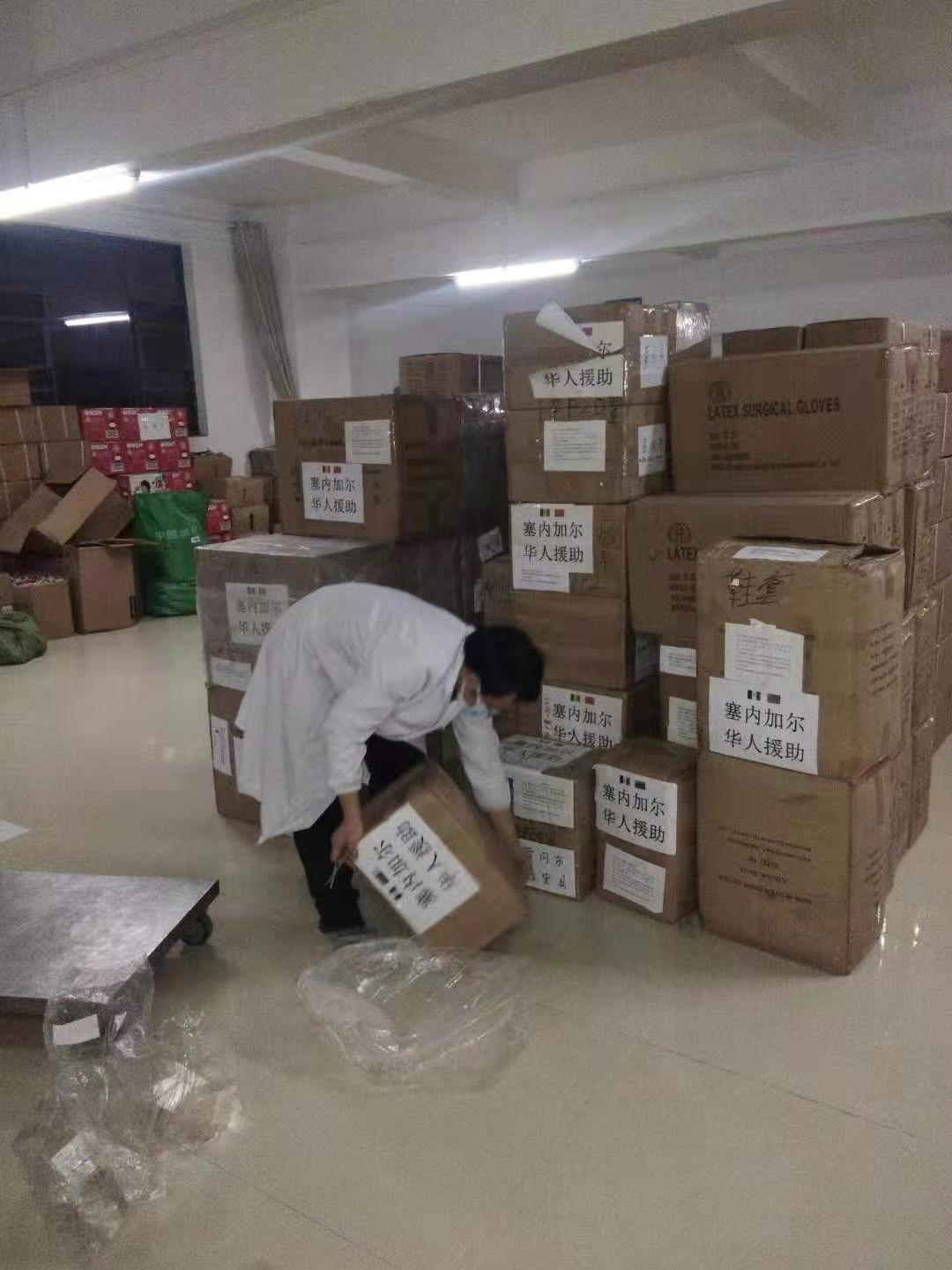Difficulties in cross-border logistics under the test of the epidemic.
Wen Tan Wenqi
Edit Hong Hong
“Putting on a mask now is like drug trafficking.” A freight forwarder who had been busy shipping scarce and precious medical supplies from overseas to China for more than 20 days, joked with a grin.
Overseas has become a key force to fill the material gap caused by the sudden outbreak. Take frontline protective clothing as an example. During the Spring Festival, the domestic production capacity of protective clothing was 13,000 sets per day, while the average daily demand in Hubei Province alone reached 100,000 sets.
According to the data released by the General Administration of Customs on February 12, from January 24 to February 11, 2020, National Customs inspected and released 870 million imported epidemic prevention and control materials, valued at 2.84 billion yuan. Among them, there were 730 million masks, 7.41 million pieces of protective clothing, 1.54 million pairs of goggles, 1.53 million items for disinfection, 2.22 million pieces of medicines, and 1.34 million pieces of medical equipment.
How did huge quantities of goods come to China in such a short time? Since the new pneumonia epidemic has been fermented, overseas Chinese and groups, domestic companies and governments, and even individuals have joined the procurement force and almost “emptied” warehouses, shelves and factories of related medical supplies overseas. Then we need to ship these materials to China in the shortest time.
Sang Yang, Chairman of the San Fulin Group, bought a total of 5.6 million pieces of medical supplies. It is a real estate, education and consulting business with a total of 9 branches in Pakistan. On January 29, Xiang Yang raised the first shipment of 50,000 masks. She found DHL when two US courier companies, FedEx and UPS, had suspended flights to China. DHL is not the best choice because it has to go through multiple pickups and is slower. These masks were stuck at the Hong Kong Customs for two days, and it took 10 days to arrive in China.
On February 13, the last box of the 2.6 million 3M surgical masks purchased by St. Flynn finally arrived on the plane. These masks have been trapped in the warehouse for more than 10 days: on January 31, Pakistan ’s flight to China was grounded; on February 3, the passenger plane resumed, but the export ban on masks was also reached at various ports, and “human flesh” carrying had become Impossible, all ports in Pakistan “have moved their true character, except one for personal use, one is not allowed to bring more.” The company tried every means to use the “military forces, chambers of commerce, and embassies” before winning the clearance.
However, due to the government’s temporary arrangement for inspection, the masks were eventually unloaded from the aircraft and are still lying in the warehouse. The takeoff time is yet to be determined.
What Xiang Yang has experienced is almost everything that overseas Chinese, enterprises and institutions from various countries in the epidemic have to encounter in order to bring goods into China urgently. As a major trading country, China’s total imports and exports in 2019 totaled 31.54 trillion yuan, of which 172,300 were exported.ng> There are people far beyond the coverage of the green channel. Liu Wuhua, the founder of the Internet sailing service platform sailing to the sea, participated in the initiation of donations and fundraising activities for Chinese in Senegal. They collected 89,340 N95 medical masks and other materials, weighing 1.4 tons, but Blaise Di Yane International Airport does not have a Chinese flight with a green channel, and Cainiao does not accept materials donated by overseas individuals. He is anxious to write a public account for help. The team had to raise more than 50,000 yuan, special crop flow fees, and send them home via Emirates.

Provided by Liu Wuhua
This is also a big test for all domestic cross-border logistics companies.
Tiejia Co., Ltd. shipped 2 million masks during the epidemic. Because of its solid logistics network in Eastern Europe, Central Asia, and Russia, the company is also responsible for finding sources for customers. Among them, Liu Jun found that the import of medical supplies exposed a major shortcoming of China—the lack of local global logistics networks such as DHL, KN, and DB Schenker.
“If you control the logistics network, all the points are yours, you will have tentacles to find local sources, and take less detours,” Liu Junxiang said. “We can also keep the Chinese epidemic in our network. Require qualitative emergencies, global response, prioritize procurement and logistics to ensure the first time transportation in place.
For example, the allocation of space and the allocation of capacity are based on disaster relief materials. They do not need to be controlled by others. Just like SF has a self-employed system in the country, it can be transferred at any time.
Now, the biggest point of weakness is in the transfer of funds. When the company needs to pay in advance, the overseas branch has insufficient cash, and the domestic banking system is still on vacation during the Chinese New Year. He had to transfer from Hong Kong and spent more. A couple of days.
“Suppose I have a large network, local companies can fully mobilize local resources including funds and credit, things are much simpler. Quick payment, fast delivery, and quickly shipped back to China.”
Liu Jun’s idea obviously takes much longer to realize than the recovery of the epidemic.
Closed mask window period
Coming soon, masks are hard to find. Suzaku sent a circle of friends selling masks to friends, and collected about 70,000 or 80,000 demand in about 10 minutes.
Purchasing person in the Suzaku team is looking for the third batch of masks in Indonesia, OK